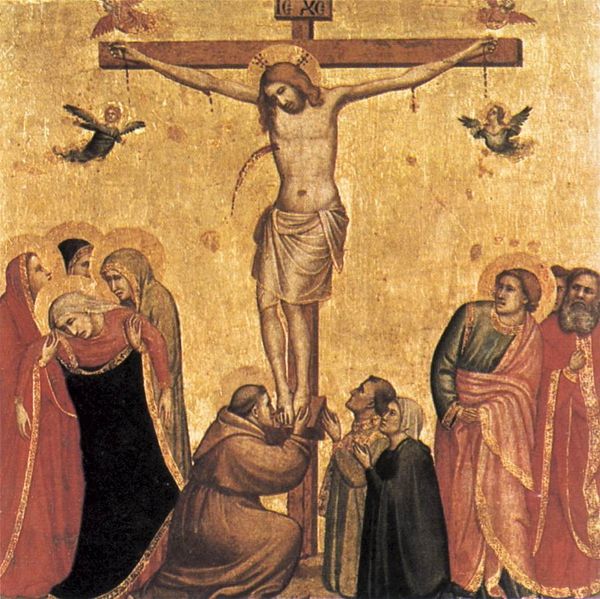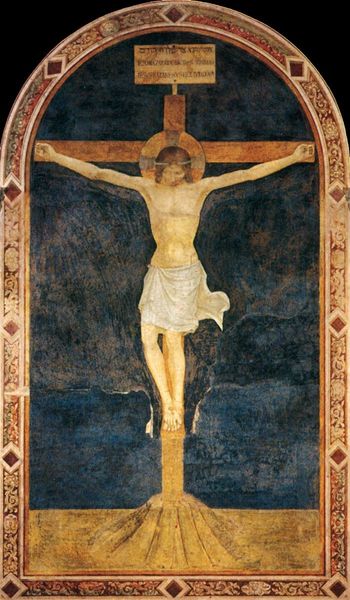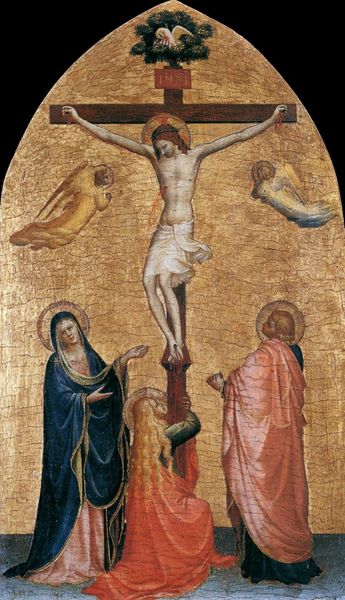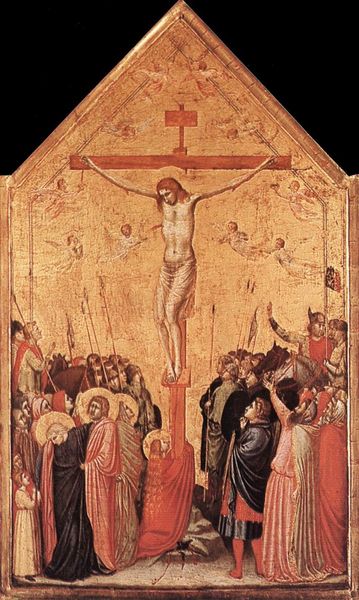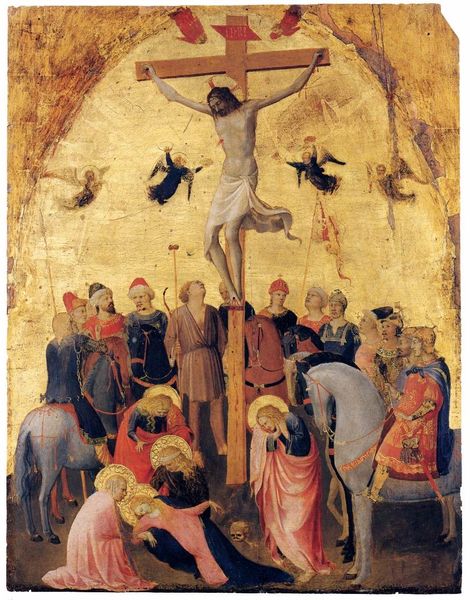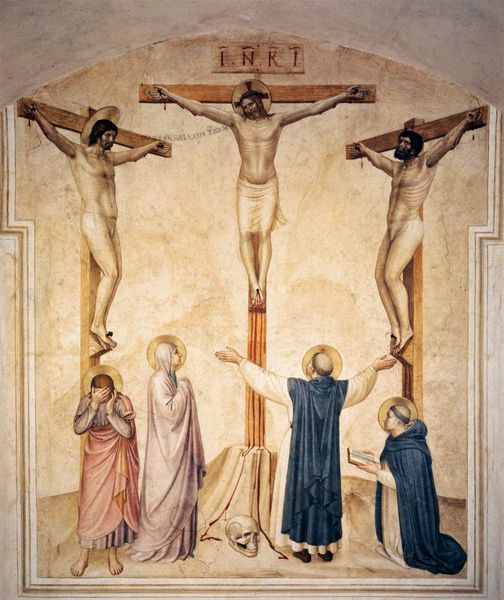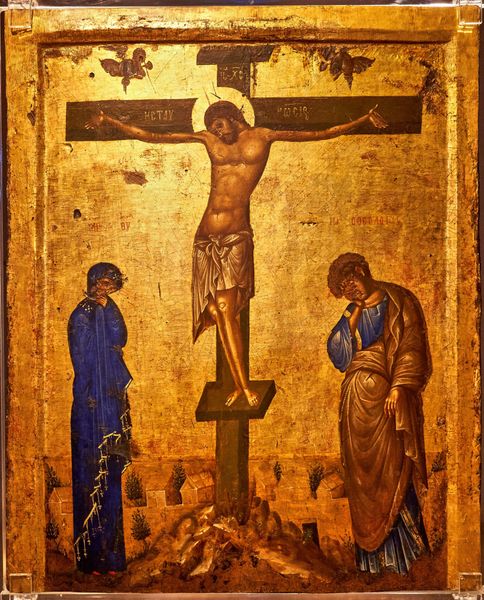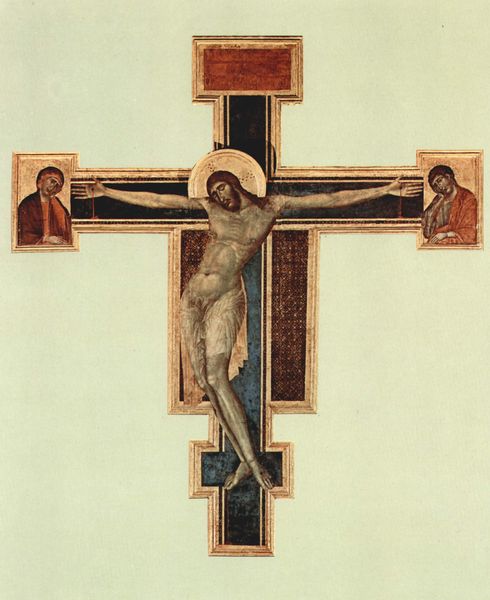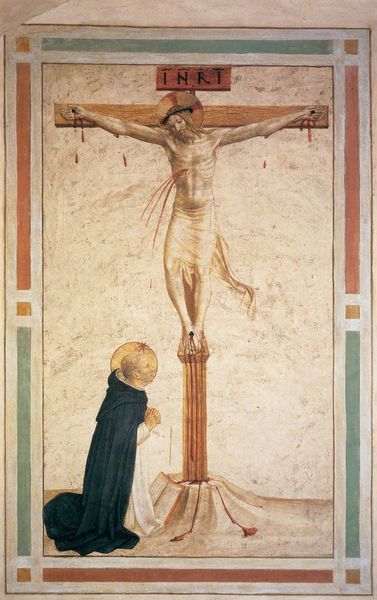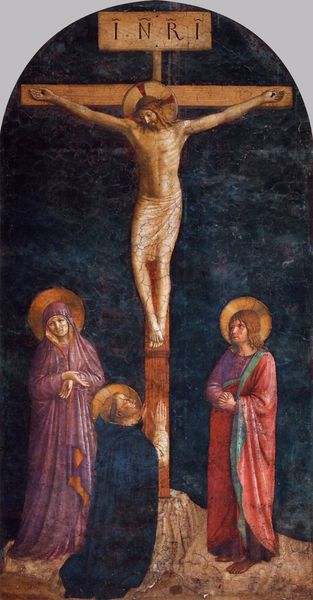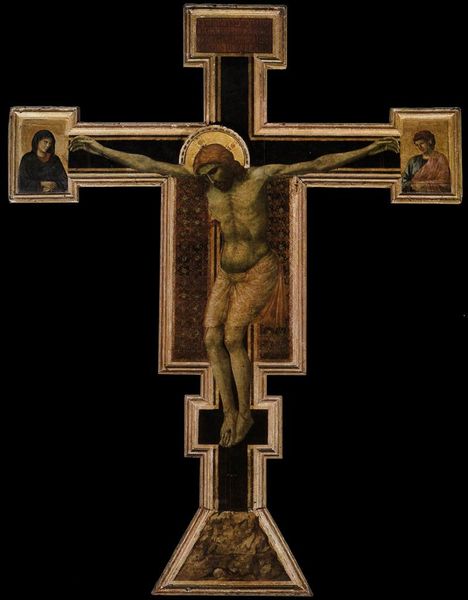
panel, tempera, painting
#
panel
#
narrative-art
#
tempera
#
painting
#
figuration
#
oil painting
#
history-painting
#
italian-renaissance
#
early-renaissance
Copyright: Public domain
Curator: Take a moment to observe "Crucifixion," a tempera on panel painting completed around 1410 by Lorenzo Monaco. Editor: There's a certain stillness despite the overt drama of the subject. The figures seem almost weightless, suspended in this luminous, golden space. Curator: Monaco was working firmly within the late Gothic tradition. Look closely at the meticulous detail of the gold ground, almost like a tapestry, and then compare that to the emotional detachment of the angels. This, of course, comes directly from the period. The gold isn’t mere decoration; it visually connects the earthly realm with the divine. Editor: True, and the idealized, somewhat slender figure of Christ doesn't convey physical suffering as later depictions might. Notice the symbolic elements? Two angels collecting blood in chalices are unusual additions. It strikes me that even Christ's pose is so perfect and formalized, as though intended for iconic representation above immediate, emotional appeal. Curator: This brings to mind debates circulating around the church, influencing lay piety through confraternities in Florence at the time. Religious imagery in Florence held an immense social importance in the Early Renaissance. What social role do you believe religious imagery plays here? The painting acted as a teaching and a spiritual object. Editor: I would say its formal elegance elevates the scene beyond the immediate brutality of the crucifixion, suggesting a transition to divine glory. But there's a subtle tension between the formalized grief, and the real sense of suffering one might be more accustomed to seeing by 1450. Lorenzo really uses compositional design to enhance his art! Curator: Indeed. Ultimately, examining this "Crucifixion" helps us reflect not only on religious narratives but on art's powerful role in shaping devotional experience. Editor: And also highlights how artists grapple with rendering profound subjects using specific visual tools within their cultural contexts. The refinement helps to appreciate his vision.
Comments
No comments
Be the first to comment and join the conversation on the ultimate creative platform.
